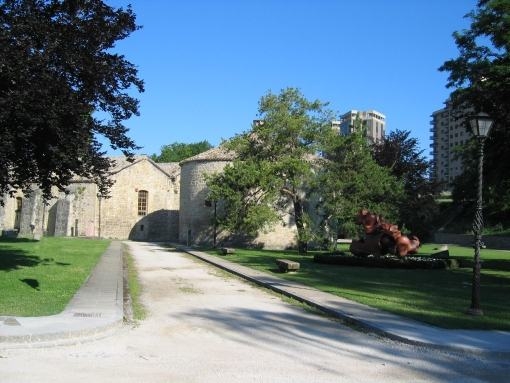A mathematical model for paroxetine antidepressant effect time course and its interaction with pindolol
B. Gruwez (1), M. Tod (1,2), A. Dauphin (1)
(1) Dpt of pharmacy-toxicology, Cochin Hospital, AP-HP, Paris, France (2) Dpt of clinical pharmacy, I.S.P.B., Claude Bernard University, Lyon, France
Background: Although selective 5-HT reuptake inhibitors (SSRIs) block monoamine uptake within hours of administration, their full clinical effect does not appear until 2-4 weeks after treatment onset. Pindolol, a betablocker with 5-HT1A receptor antagonist activity has been shown to decrease the delay of action of SSRIs. Howewer, the optimal dosing schedule of pindolol remains controversial.
Objectives: development of a new class of PK-PD models in order to fit the data of a published randomized trial and to simulate the influence of pindolol on paroxetine clinical response time course.
Methods: the model is based on the concept of homeostatic control mechanisms, in which SSRIs exert their antidepressant effect by increasing the transduction set-point of the postsynaptic 5-HT1A receptor, and pindolol increases the rate of feedback mechanisms. The clinical response to paroxetine (assessed with the MADRS scale) is related to the level of post synaptic transduction by a Hill- type model. The parameters were estimated by non-linear regression using weighted least-squares. The objective function to be minimised was based on the comparison between the proportion of treatment responders observed at several time points in the study of Tome and the expected proportions estimated by population simulation based on the model. The goodness-of-fit was assessed by a predictive check. Finally, the score simulations on the MADRS scale with different doses of paroxetine and pindolol, were performed using ADAPT II software.
Results: The predictive distribution of the proportion of responders at each day of measurement was not significantly different from the proportions observed in the clinical trial . Since no lack-of-fit arises, the model and the parameter values are compatible with experimental data. The simulated MADRS total scores obtained after treatment with paroxetine alone (20 mg/d) or combined with different doses of pindolol (1.5 mg/d, 7.5 mg/d and 37.5 mg/d) supported that the reason for inconstant pindolol efficacy is that the 7.5 mg dose is too low.
Conclusion: The model seems to own a number of desirable features, allowing its use for clinical trial simulation or analysis. This kind of model could be applied to characterize time course of other antidepressants response ; currently , the ability of the model to describe the data of a trial of efficacy of the combination clomipramine plus lithium or placebo in the treatment of unipolar depression is ongoing .
References:
-Januel D, Poirier MF, D’alche-Biree F, Dib M, Olie JP Multicenter double-blind randomized parallel-group clinical trial of efficacy of the combination clomipramine (150 mg/day) plus lithium carbonate (750 mg/day) versus clomipramine (150 mg/day) plus placebo in the treatment of unipolar major depression. J Affect Disord 2003 ; 76 : 191-200.
-Tome MB, Isaac MT, Harte R, Holland C. Paroxetine and pindolol : a randomized trial of serotonergic autoreceptor blockade in the reduction of antidepressant latency. Int Clin Psychopharmacol 1997; 12 : 81-89.
-Zuideveld KP, Maas HJ, Treijtel N, Hulshof J, Van Der Graaf PH, Peletier LA, Danhof M. A set-point model with oscillatory behavior predicts the time course of 8-OH-DPAT-induced hypothermia. Am J Physiol Regulatory, Integrative Comp Physiol 2001; 281:R2059-R2071.
